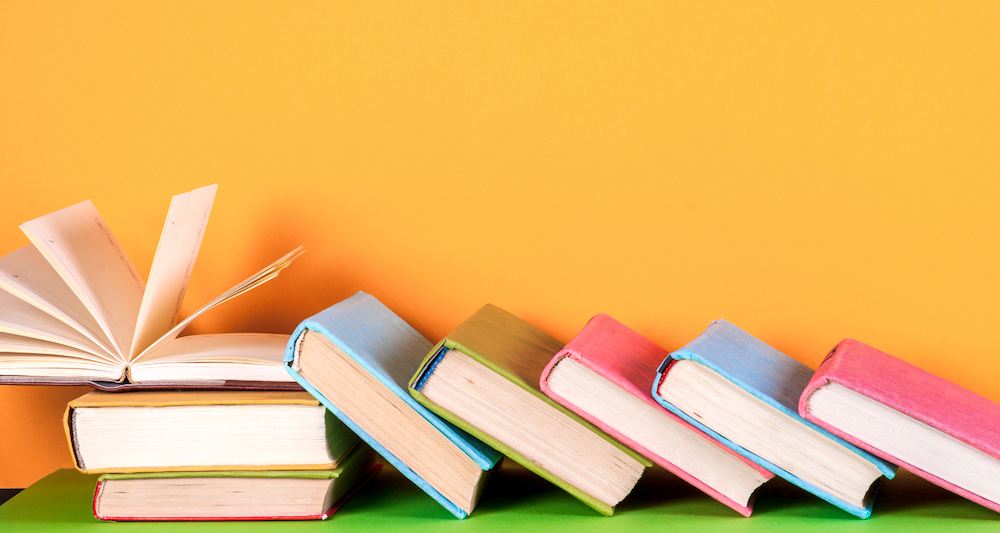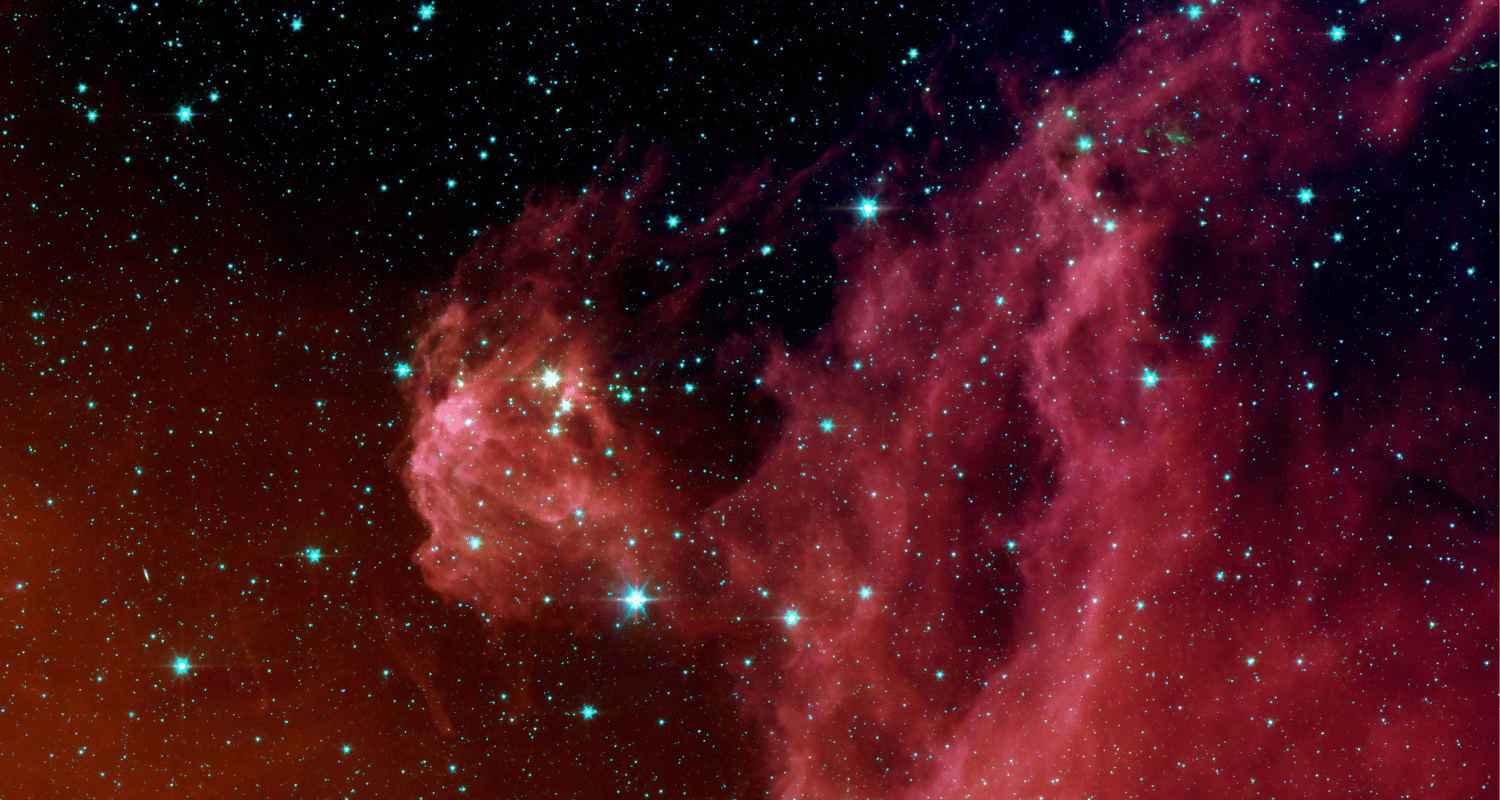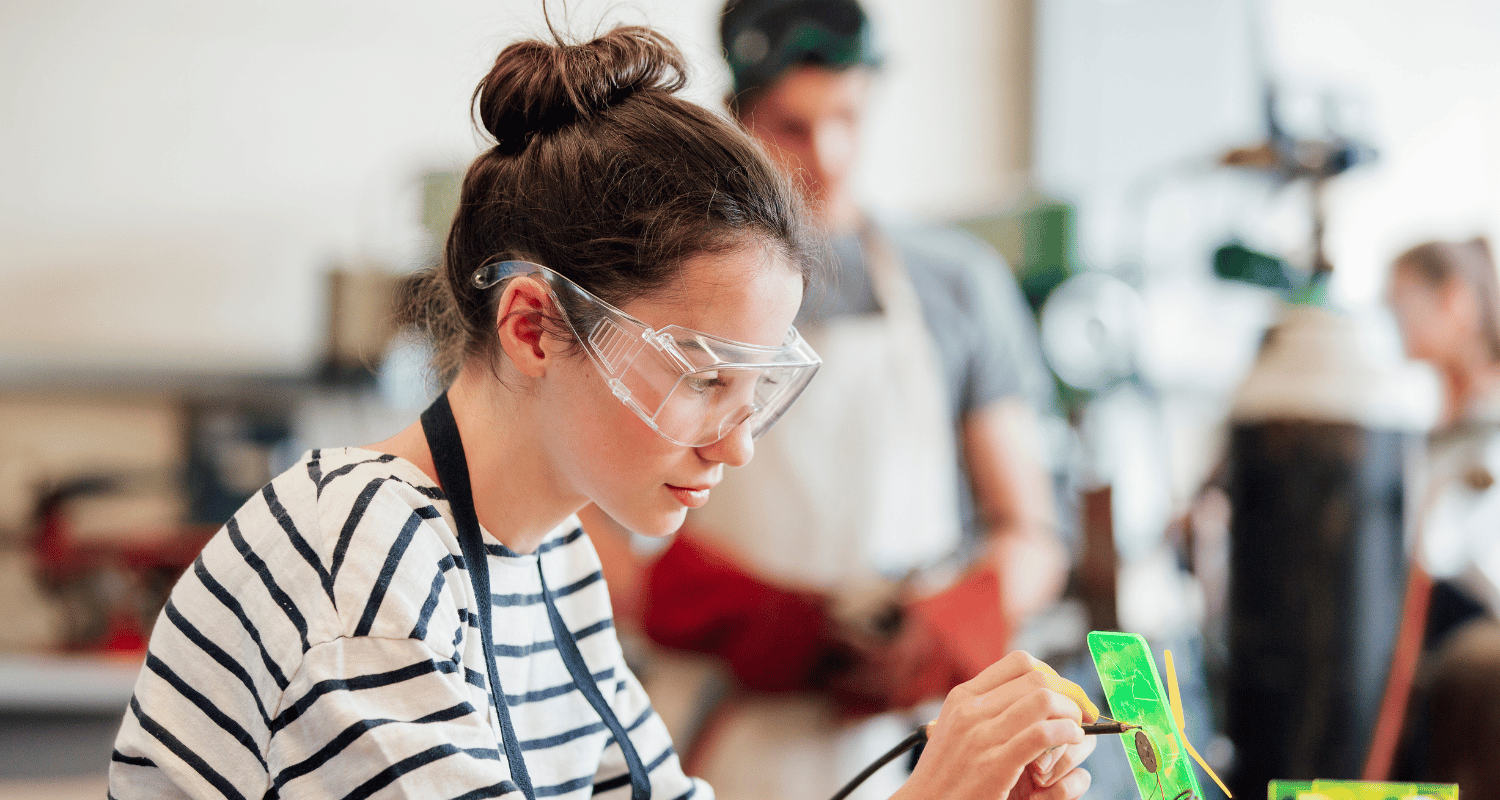
By CAGIS
Summer is in full swing, and what better way to enjoy the sunny skies or restful rain days than with a wonderful book to read? We’ve put together a summer reading list for all ages that we hope you’ll enjoy! And don’t forget to support your local library or small bookstores.
Ages 6 – 8

The Girl Who Loved Giraffes – and Became the World’s First Giraffologist
When Anne Innis saw her first giraffe in a zoo, she was entranced. So much so that a love for giraffes shaped her whole life. She decided at a young age that she would one day travel from her home in Canada to study giraffes in their natural environment in Africa. In The Girl Who Loved Giraffes and became the world’s first giraffologist, Kathy Stinson and François Thisdale have created a gem of a book that captures the dramatic story of Anne’s life, the majestic beauty of giraffes, and fascinating facts about this most intriguing and magnificent creature.

Science You Can Eat: 20 Activities that Put Food Under the Microscope
Discover the incredible, edible science that happens every time you cook, bake, or eat with this children’s book that is part-cookbook, part-science reference. This children’s book explores the science of food by asking the questions that you’re hungry to know the answers to and providing you with the chance to test them out through fun experiments. Science You Can Eat will transform your kitchen into a lab through 20 fun food experiments. Cooking is chemistry, and all of the fun science experiments inside this book are edible!

The Boreal Forest: A Year in the World’s Largest Land Biome
Combining lyrical storytelling with expertly researched informational text, this beautiful book provides a year-long tour of the planet’s largest land biome — one of our most important wildernesses. The vast boreal forest spans a dozen countries in the northern regions like “a scarf around the neck of the world,” making it the planet’s largest land biome. Besides providing homes for a diversity of species, this spectacular forest is also vitally important to the planet: its trees clean our air, its wetlands clean our water and its existence plays an important role in slowing global climate change. In this beautifully written book, award-winning author L. E. Carmichael explores this special wilderness on a tour of the forest throughout the four seasons, from one country to another.

Sila and the Land
Three young Indigenous women came together to write a children’s book that could help share perspectives on the land common across First Nations, Métis and Inuit communities. This includes a shared respect for the earth and an understanding of our responsibilities to protect it for future generations. In order to convey these perspectives in the story, the authors spoke with youth from a number of Indigenous communities across Canada. They asked about why the environment was important to each of them and what land based teachings and experiences were significant to their identities and cultures. Their responses helped shape the book, offering examples of things Sila could learn from the land during her journey travelling across the North, East, South and West. It is important to note that while there are shared perspectives across Indigenous communities there are also many differences. This book does not claim to represent any specific cultures or teachings, but instead encourages children and youth to seek out knowledge from the territories that they are living on. It also aims to inspire other young Indigenous writers and illustrators to believe in their gifts and the power of their stories.
Ages 8 – 10

101 Great Science Experiments
Whether you’re looking for ideas for the science fair or projects to encourage learning at home or in the classroom, 101 Great Science Experiments is organized into 11 different science subjects and includes experiments for almost any interest area. The book includes plenty of experiments for adults and children to do together, but for kids who want more independence, it also includes experiments that can be done by children alone. Photos, illustrations, and step-by-step instructions make each process clear and accessible.

Women in Science (Series)
The titles in the new Women in Science series take a highly visual approach to telling the stories of important women scientists. Each title features bite-sized text telling the story of a scientist’s life, groundbreaking work, and legacy in an engaging and accessible way, illustrated with original artwork and photographs. Featured scientists are Ada Lovelace, Temple Grandin, Jane Goodall, and Rachel Carson.

skɬp’lk’mitkw / Water Changeling
skɬp’lk’mitkw / Water Changeling is the story of the natural water cycle from a Syilx traditional ecological knowledge perspective. The story features a water girl named skɬp’lk’mitkw who longs to visit with her grandparents. She receives help from newfound friends who change her into rain, hail and snow so she can reach her grandparents.

We Are All Connected: The Earth, Our Home
We Are All Connected is a series that explores how we all live together in a shared balance upon Mother Earth. Each book explores a specific ecosystem with a focus on one animal and its adaptations for survival within that ecosystem. Indigenous interviewees, each living within the same area, have responded to strategic questions as to how their community interacts with the land, their traditional territory. Explore each text with a sense of inquiry in mind. The two foundational books provide deeper understanding of the content of the “We Are All Connected” titles. We Are All Connected: The Earth, Our Home- explores biomes, ecosystems and biodiversity. We Are All Connected: The Earth, We Share- explores the interconnectedness between living and non-living things.

Finding Wonders: Three Girls Who Changed Science
This “evocative and beautiful” (School Library Journal) novel “vividly imagines the lives of three girls” (Booklist, starred review) in three different time periods as they grow up to become groundbreaking scientists.

Astronauts: Women on the Final Frontier
For decades during the early space race, NASA knew the “right” sort of person to be an astronaut — and they were all men. Talented women were denied the chance to try, even when they proved they were just as qualified. Then Valentina Tereshkova of the USSR became the first woman in space, and suddenly, NASA wanted to catch up. Group 9, NASA’s first mixed gender class, still had to fight stereotypes, but they proved that women also deserved to fly. The author / illustrator pair behind Primates: The Fearless Science of Jane Goodall, Dian Fossey, and Biruté Galdikas tells this captivating story in the voice of former astronaut Mary Cleave, creating an inspiring graphic novel that reminds readers that progress is fastest when we include everyone.

The Inuit Thought of It: Amazing Arctic Innovations
Today’s Arctic communities have all the comforts of modern living. Yet the Inuit survived in this harsh landscape for hundreds of years with nothing but the land and their own ingenuity. Join authors Alootook Ipellie and David MacDonald as they explore the amazing innovations of traditional Inuit and how their ideas continue to echo around the world. Some inventions are still familiar to us: the one-person watercraft known as a kayak still retains its Inuit name. Other innovations have been replaced by modern technology: slitted snow goggles protected Inuit eyes long before sunglasses arrived on the scene. Andother ideas were surprisingly inspired: using human-shaped stone stacks (Inunnguat) to trick and trap caribou.
Ages 13 – 16
This is Your Brain on Stereotypes
An essential overview of the science behind stereotypes: from why our brains form them to how recognizing them can help us be less biased. From the time we’re babies, our brains constantly sort and label the world around us — a skill that’s crucial for our survival. But, as adolescents are all too aware, there’s a tremendous downside: when we do this to groups of people it can cause great harm. Here’s a comprehensive introduction to the science behind stereotypes that will help young people make sense of why we classify people, and how we can change our thinking. It covers the history of identifying stereotypes, secret biases in our brains, and how stereotypes affect our sense of self. Most importantly, it covers current research into how science can help us overcome our biases, offering hope for a future where stereotypes are less prevalent and the world is more fair for everyone.

Primates: The Fearless Science of Jane Goodall, Dian Fossey, and Birute Galdikas
Jim Ottaviani returns with an action-packed account of the three greatest primatologists of the last century: Jane Goodall, Dian Fossey, and Biruté Galdikas. These three ground-breaking researchers were all students of the great Louis Leakey, and each made profound contributions to primatology-and to our own understanding of ourselves. Tackling Goodall, Fossey, and Galdikas in turn, and covering the highlights of their respective careers, Primates is an accessible, entertaining, and informative look at the field of primatology and at the lives of three of the most remarkable women scientists of the twentieth century. Thanks to the charming and inviting illustrations by Maris Wicks, this is a nonfiction graphic novel with broad appeal.
Ages 16+
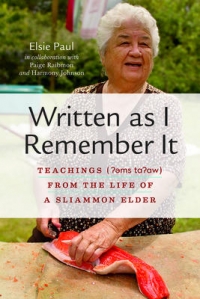
Written as I Remember It: Teachings from the Life of a Sliammon Elder
Long before vacationers discovered British Columbia’s Sunshine Coast, the Sliammon, a Coast Salish people, called the region home. Elsie Paul is one of the last surviving mother-tongue speakers of the Sliammon language. In this remarkable book, she collaborates with her granddaughter, Harmony Johnson, and a scholar, Paige Raibmon, to tell her life story and the history of her people, in her own words and storytelling style. Raised by her grandparents who took her on their seasonal travels, Paul spent most of her childhood learning Sliammon ways, teachings, and stories. She shares this traditional knowledge with future generations in Written as I Remember It.
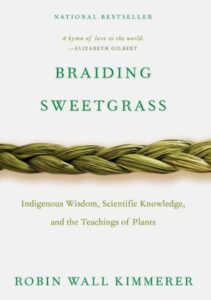
Braiding Sweetgrass: Indigenous Wisdom, Scientific Knowledge and the Teachings of Plants
As a botanist, Robin Wall Kimmerer has been trained to ask questions of nature with the tools of science. As a member of the Citizen Potawatomi Nation, she embraces the notion that plants and animals are our oldest teachers. In Braiding Sweetgrass, Kimmerer brings these two lenses of knowledge together to take us on “a journey that is every bit as mythic as it is scientific, as sacred as it is historical, as clever as it is wise” (Elizabeth Gilbert). Drawing on her life as an indigenous scientist, and as a woman, Kimmerer shows how other living beings—asters and goldenrod, strawberries and squash, salamanders, algae, and sweetgrass—offer us gifts and lessons, even if we’ve forgotten how to hear their voices. In reflections that range from the creation of Turtle Island to the forces that threaten its flourishing today, she circles toward a central argument: that the awakening of ecological consciousness requires the acknowledgment and celebration of our reciprocal relationship with the rest of the living world. For only when we can hear the languages of other beings will we be capable of understanding the generosity of the earth, and learn to give our own gifts in return.
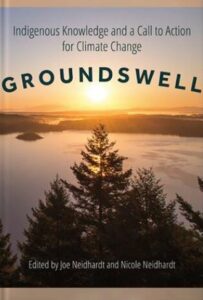
Groundswell: Indigenous Knowledge and a Call to Action for Climate Change
Groundswell is a collection of stirring and passionate essays from both Indigenous and non-Indigenous writers that, together, present a compelling message about how traditional Indigenous knowledge and practices can and must be used to address climate change. The chapters eloquently interconnect, taking us from radical thinking to the gentleness of breath, demonstrating that we are all in this together, that we must understand what needs to be accomplished and participate in the care of Mother Earth. Authors tap into religious and spiritual perspectives, explore the wisdom of youth, and share the insights of a nature-based philosophy. These collective writings give you a chance to contemplate and formulate your own direction. A moral revolution that can produce a groundswell of momentum toward a diverse society based on human rights, Indigenous rights, and the rights of Mother Earth. Beautifully illustrated with photographs, Groundswell is augmented with video recordings from the authors and a short documentary film, available on the project’s website. Profits from the book will help support the videos, documentary, and future projects of The Call to Action for Climate Change.

